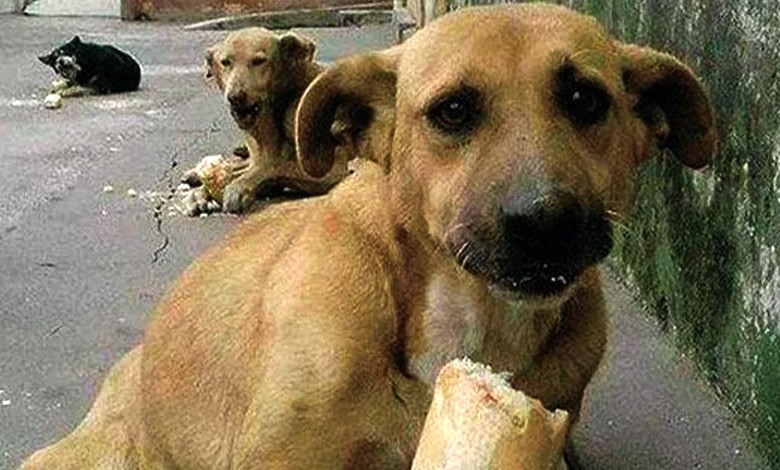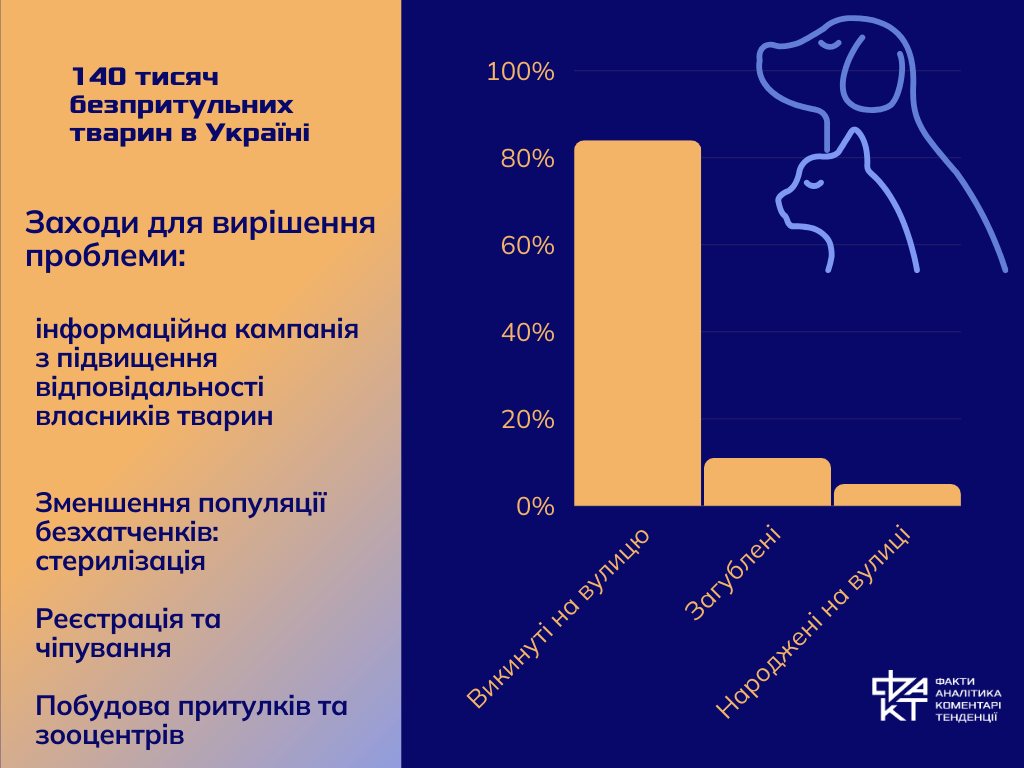We are responsible for those who are domesticated: the problem of homeless animals in Ukraine (infographic)

The problem of homeless animals in Ukraine has always been painful. Dogs with hungry eyes near supermarkets and entrances, cats warming up in basements and feeding on garbage cans – this picture has become almost familiar to us. There were always good people who took care of four-legged homeless people. However, with the beginning of the war, the situation of homeless animals worsened. The hostilities not only created a humanitarian crisis for the human community, but also left thousands of animals homeless. Distraught and hungry dogs and cats that were abandoned by people during the evacuation or lost their homes due to destruction, find themselves on the streets of cities and villages. Today, this problem needs an immediate solution, because homeless animals not only suffer themselves, but also pose a danger to people, being carriers of various diseases.
Why do animals end up on the street?
One of the main reasons is the irresponsibility of people. Many owners allow uncontrolled reproduction of animals, which are then thrown out into the street.
As a result, hundreds of four-legged homeless people are forced to wander the streets in search of food and water. They can come into contact with sick or infected animals, which is also a serious problem. According to the Austrian organization Four Paws, in the second half of 2022, multiple cases of rabies with at least two confirmed human victims were registered in Ukraine (https://www.four-paws.org/campaigns-topics/topics/help-for-stray- animals/stray-animal-care-in-ukraine).
According to the statistics of the online edition My dog, currently more than 140,000 homeless animals are recorded in Ukraine.
Of them:
- 84% of the animals were dumped on the street by their previous owners.
- 11% were lost, i.e. found themselves on the street by accident.
- 5% of animals were born outside.

How is the problem solved?
Since 2021, when the killing of homeless animals became illegal in Ukraine, municipalities began to create facilities for their humane reduction through sterilization, vaccination and other methods.
According to Media detector to date, there are 510 shelters for animals in Ukraine, which try to provide temporary housing, food and medical assistance to homeless animals. There are also various animal protection programs, among which the most effective are:
- Animal sterilization and castration programs.
- Information campaigns on responsible treatment of pets.
- Programs for finding new owners for homeless animals.
The problem of lack of resources remains constant for shelters, because the level of income of Ukrainians has fallen, so donations as the main source of existence of shelters have decreased. There is a lack of workers to care for animals, in the front-line areas, where both abandoned animals and shelters are the biggest problem, as well as the destruction of premises, wear and tear of enclosures, etc.
Experience of Western countries
In many countries of the world, various programs to control the population of homeless animals have been successfully implemented. For example, in Germany and the Netherlands there is a system of mandatory registration and chipping of pets, which helps to quickly find the owner in the event of a lost animal. Sterilization and castration programs funded by the state and private organizations are active in the United States.
Finland has the lowest number of homeless animals in Europe thanks to comprehensive sterilization programs and high responsibility of pet owners. There are also numerous educational programs that teach the population how to properly care for animals. Sweden has implemented strict animal welfare laws, including mandatory registration of all pets. Animal owners are responsible for their health and well-being, which significantly reduces the number of abandoned animals.
Register of pets in Ukraine
In Ukraine, a register of domestic animals has been created, which is one of the ways to avoid irresponsibility of owners. It will allow owners to register their pets, which will facilitate the identification of lost animals and their return home. When the animal is found, the owner will receive a message, which will reduce the number of four-legged friends who end up on the street due to loss. It is assumed that the registration system will encourage owners to be more responsible towards their animals, as any actions with animals will be recorded and it will be possible to track the history of their care. The register will make it possible to monitor whether the animals are cared for or vaccinated. Having a centralized database will help identify cases of animal cruelty and bring the perpetrators to justice.
We turned to the pet registry in the app “Action” and found that it contained 31 sets of data related to location, capture, sterilization, animal identification, and more. All databases are fragmentary and do not contain all the necessary data to understand the situation of domestic animals as a whole. And since the digital toolkit does not outline the scale of the problem and even more so does not solve it, the only thing that can be relied on in this situation is the personal responsibility of those who tamed the four-legged ones.
Alina Lukutina





